When U.S. Senator Ted Cruz described the killings of Christians in Nigeria as a “Christian genocide,” his words reignited an old and painful debate; one that cuts to the heart of Nigeria’s security crisis and its fragile religious balance. Over the past five years, thousands of Christians have been killed in attacks across the Middle Belt and northern states, fueling claims of systematic persecution. Yet, government officials and some analysts argue that the violence is not faith-driven but rooted in terrorism, banditry, and competition over land and resources. Hence, Sunday Ehigiator in this report examines the facts and myths surrounding the allegation of a Christian genocide in Nigeria, probing the data, the incidents, the narratives, and the politics shaping both local and global perceptions of a nation where faith and fear often collide
Nigeria is a country where headlines about mass killings, church attacks and communal reprisals arrive with unnerving regularity. In 2024–2025, the debate over whether what’s happening to Christian communities in parts of Nigeria amounts to “genocide” exploded beyond the country’s borders, carried by social media, foreign politicians and faith-based advocacy groups.
That debate is not just semantic: whether to call something genocide shapes foreign policy, humanitarian response, and the possibility of international investigation or intervention. It also changes how Nigerians, Christian and Muslim alike, make sense of violence that has many faces and many causes.
However, it is instructive to note that Nigeria’s security crisis has long worn many faces: insurgency, banditry, farmer–herder clashes, communal reprisals, kidnappings-for-ransom, and intercommunal violence.
Over the past five years, part of the public debate has turned sharply political and religious: claims that Christians in Nigeria are being subjected to genocide. That claim has reached international platforms, stirred diplomatic responses, and been fiercely contested in domestic politics. The question is not merely academic: whether the violence amounts to genocide matters for accountability, protection, policy and public trust.
Extended background
On October 20, 2025, the Special Adviser to the President on Media and Policy Communication, Barrister Daniel Bwala, visited the Christian Association of Nigeria’s (CAN) Secretariat at the National Christian Centre, Abuja.
According to CAN, he aimed to clarify the government’s response to remarks by U.S. Senator Ted Cruz, who had referred to pervasive attacks on Christian communities in Nigeria as ‘Christian genocide’. Bwala reportedly emphasised that both Christians and Muslims suffer from insecurity, and presented the government’s position that the current administration inherited systemic challenges it is working to remedy.
CAN’s leadership, led by Archbishop Daniel Okoh, stated publicly that its position has long been firm: Christian communities in northern Nigeria and the Middle Belt have endured repeated, organised and brutal attacks, yielding thousands of deaths, widespread displacement, and destruction of villages.
CAN asserted that these are not isolated acts of violence but part of a pattern of persecution that has been allowed to fester without justice. CAN also denied media reports that during the meeting, Okoh had dismissed the genocide claim, saying the meeting was recorded and no such language, calling the attacks “so-called genocide,” was ever used.
At the meeting, CAN’s Director of Planning, Research and Strategy, Bishop Mike Akpami, presented data purportedly drawn from orfa. Africa (a data aggregator), showing sustained targeting of Christian communities across Nigeria and beyond.
The meeting included CAN’s national leadership team, though two individuals named in some media summaries, Rev. Dr Uzoaku Williams and Dr Celestine Aharanwa, were reportedly not present.
With its statement, CAN pressed the Federal Government and security agencies to act with “urgency, fairness and transparency” to halt killings and bring perpetrators to justice. The statement also warned media professionals and officials that careless rhetoric can deepen wounds and undermine peace.
This engagement is symptomatic of how the narrative of ‘Christian genocide’ has become deeply woven into political contestation, and why rigorous scrutiny of such claims is urgent. But first, what is genocide?
What is genocide?
According to the United Nations (UN), “the word ‘genocide’ was first coined by Polish lawyer Raphäel Lemkin in 1944 in his book Axis Rule in Occupied Europe. It consists of the Greek prefix genos, meaning race or tribe, and the Latin suffix cide, meaning killing.
“Lemkin developed the term partly in response to the Nazi policies of systematic murder of Jewish people during the Holocaust, but also in response to previous instances in history of targeted actions aimed at the destruction of particular groups of people. Later on, Raphäel Lemkin led the campaign to have genocide recognised and codified as an international crime.
“Genocide was first recognised as a crime under international law in 1946 by the United Nations General Assembly (A/RES/96-I). It was codified as an independent crime in the 1948 Convention on the Prevention and Punishment of the Crime of Genocide (the Genocide Convention). The Convention has been ratified by 153 States (as of April 2022).
“In the present Convention, genocide means any of the following acts committed with intent to destroy, in whole or in part, a national, ethnical, racial or religious group, as such: Killing members of the group; Causing serious bodily or mental harm to members of the group; Deliberately inflicting on the group conditions of life calculated to bring about its physical destruction in whole or in part; Imposing measures intended to prevent births within the group; Forcibly transferring children of the group to another group.”
The hard facts on the ground
There has been a very high toll of deaths, displacement and destruction in multiple states. Credible human-rights organisations and investigative groups have documented large numbers of killings and widespread displacement across Nigeria’s Middle Belt, parts of the South-East, the North-West and North-Central regions, as well as attacks by extremist groups in the North-East.
Amnesty International, for instance, has published extensive reports on thousands killed and hundreds forcibly disappeared in the south-east and other regions in recent years.
Victims have included Christians and Muslims, often in the same communities. Although many of the most publicised incidents involved Christian victims (particularly in states where indigenous farming communities are predominantly Christian), reputable trackers show that violence has affected multiple groups.
Patterns include attacks on farming communities by armed pastoralist militias, raids by jihadist groups (like ISWAP/Boko Haram in the northeast), organised criminal kidnappings-for-ransom, and violent reprisals between communities. Across these modes of violence, victims are not exclusively Christian.
Perpetrators are varied: Fulani-affiliated militias, jihadist groups, unknown gunmen, local vigilantes and criminal gangs.
Reports link particular incidents to different actors depending on geography: jihadist cells in the northeast, armed pastoralist or ‘herder’ groups in the Middle Belt, local militias and ‘unknown gunmen’ in parts of the southeast.
Attribution is often contested and sometimes uncertain; actors may collude, rebrand, or use proxies. That complexity undermines any simple single-cause explanation.
Data on deaths and motives is contested and inconsistent. Different groups, the Nigerian government, international NGOs, advocacy organisations and independent trackers, publish figures that differ in method and scope.
Some faith-based organisations track killings of Christians specifically and present disproportionate victimhood; other human-rights groups track all conflict-related deaths and stress multiple drivers (land disputes, criminality, jihadist insurgency, weak policing). The divergence in figures and definitions feeds the political fight over whether the term ‘genocide’ applies.
Myths that spread
Myth 1: ‘There is an organised, nationwide campaign led by the Nigerian state to exterminate Christians’
This is one of the most explosive claims and also one of the easiest to test. If the state were carrying out or coordinating an extermination campaign, investigators would expect to find evidence of central planning, orders, mobilised security forces participating or standing down in a coordinated way, and policies that target Christians systematically.
While there are well-documented cases of state fragility, uneven or abusive security responses, and at times complicity or inaction by security services, mainstream investigative reports have not produced evidence of an orchestrated state-led extermination of Christians.
Political actors may amplify specific incidents and lodge allegations against the state, but those claims remain unproven at the scale required for a ‘state genocide’ finding.
Myth 2: ‘All perpetrators are Muslim Fulani and all victims are Christian’.
This simplification conflates ethnicity, religion and criminality. Some perpetrators accused in high-profile attacks are Fulani pastoralists and are predominantly Muslim; many victims in the affected agricultural belts are Christian.
But the mosaic of violence also includes Muslim victims, attacks by jihadist Islamist groups (whose targets can include Muslims who oppose them), intra-communal reprisals, and criminal gangs whose motives are economic rather than religious.
Reducing the conflict to a single religious binary erases underlying drivers: competition for land and water, climate stress, weak rule of law, proliferation of small arms and decades of impunity.
Myth 3: ‘Large numbers claimed by some organisations are fully verified’.
Different organisations collect data with different goals and methodologies. Faith-based groups that focus on persecution of Christians sometimes publish figures that single out Christian victims; civil-society and academic trackers typically use broader definitions and more conservative verification standards.
Numbers that circulate on social media, sometimes cited by sympathetic politicians, may be aggregated from partial datasets or from local tallies that are not independently verified. That does not mean the underlying suffering is false, but it does mean raw figures should be treated cautiously and examined for methodology.
Myth 4: ‘Because casualties are higher in places with many Christians, the violence must be genocidal’
Higher casualty rates in some predominantly Christian states are indeed an important fact and an urgent cause for protection. But proportional impact can arise from geography and demography; violent actors operating in areas where Christians are concentrated will, by definition, kill more Christians.
Proportionality alone does not establish genocidal intent. Proving genocide requires evidence that attackers intended to destroy Christians as such, not merely that they attacked a particular area where Christians happen to live. International prosecutors must show intent to destroy “a protected group,” which is difficult to prove and requires documentation of orders, communications, or an ideology targeting that group.
Trends, Statistics and Incidents in Recent Years
In assessing whether Christian communities are facing genocide, it is crucial to review recent incidents and available statistics. I emphasise: these figures are contested, data collection is uneven, and attribution (religiously motivated vs. criminal or communal) is often unclear.
National-level figures and trends
According to the investigative NGO Intersociety, over the fourteen years from 2009 through early 2023, at least 52,250 Christians have been killed. In that same reporting period, Intersociety claimed some 18,000 Christian churches and 2,200 Christian schools were attacked, and over 34,000 moderate Muslims died in Islamist attacks (a statistic intended to underscore that violence is not one-sided).
Another NGO, known as Open Doors, which tracks persecution against Christians globally, reports that Nigeria remains the country in which the highest number of Christians are killed for their faith.
Its 2024 World Watch List found that 3,100 Christians were killed and 2,830 kidnapped in Nigeria in that year alone. In the first seven months of 2025, Intersociety reported that over 7,000 Christians were killed in Nigeria.
Beyond faith-based reporting, the Armed Conflict Location & Event Data Project (ACLED) records that between January 2020 and September 2025, there were about 20,409 deaths from civilian-targeted attacks in Nigeria (not all faith-based).
Among those, in “religion-targeted” events (where victims’ religious identity was reportedly a motive), 317 deaths of Christians and 417 deaths of Muslims were recorded.
Credible human rights and conflict monitors caution that these numbers reflect only recorded incidents; many deaths likely go unrecorded, especially in remote areas where victims cannot be properly counted or identified.
Notable Massacres and Attacks Since 2020
Over the past five years, multiple high-profile attacks on Christian communities or worship spaces have shocked Nigerians and drawn international attention.
One of the most cited is the June 5, 2022, attack on St. Francis Xavier Catholic Church in Owo, Ondo State, during Sunday worship.
At least 40 people were confirmed killed, with some estimates placing the figure higher. The attack involved both a bombing component and a mass shooting, and was widely attributed to Islamist militants, though no group has ever definitively claimed the act.
In August 2025, Nigerian courts arraigned five suspects in the attack under terrorism laws, signalling one of the few efforts to pursue accountability for one of the more symbolic Christian-targeted attacks.
In April 2023, the Runji massacre occurred in Zangon Kataf, Kaduna State, where bandits attacked a predominantly Christian village, killing at least 33 people and burning dozens of houses.
In December 2023, a spate of attacks across rural communities in Plateau State (Middle Belt) left approximately 200 dead and over 500 injured. These attacks hit dozens of villages across Bokkos and Barkin Ladi Local Government Areas in what has been dubbed the ‘Christmas massacres’.
Victims were overwhelmingly civilian farmers, many Christian, and assailants are believed to be Fulani militia operating under communal tensions.
In May 2025, four communities in Benue State were targeted in attacks attributed to itinerant Fulani herders, leaving 42 killed, including children, and injuring a Catholic priest among others.
Also in 2025, between June 13 and 14, gunmen reportedly massacred between 100 and 200 internally displaced persons in Yelwata village, in Nigeria’s north-central region; many of the victims were Christian mission camp residents.
During the Easter period in 2025, reports emerged that over 170 Christians were killed in various raids in the Middle Belt, with 72 of those deaths documented in Benue State alone.
In 2024, Nigeria topped reports of Christian casualties worldwide, with Open Doors noting 3,100 Christians killed and 2,830 kidnapped that year; a rate unmatched elsewhere.
In early 2025, an attack on a predominantly Christian farming community in Zike, Plateau State, left 40 people dead and led to widespread property destruction, looting, and displacement. No arrests were immediately made, prompting condemnation from the president and calls for a deeper investigation.
Taken together, these incidents are striking in their scale, brutality, targeting of civilians, and symbolic resonance; churches, mission camps, and displaced persons. They underscore the seriousness of violence directed at Christian communities in Nigeria in recent years.
Interpreting the Data: Patterns, Drivers, and Limitations
The raw numbers and incidents provide a sobering backdrop. But whether they support the legal claim of genocide, or even a broader moral claim of systematic persecution, depends on interpretation, motive and context.
Patterns and Red Flags
Several patterns emerge. First, many of the attacks occur in areas of contested land use: the Middle Belt, parts of Kaduna, Benue, Plateau, and other zones where Christian farming communities and Muslim pastoralists (often Fulani) live adjacent or in tension.
Here, the overlap of resource competition, climate stress (reduced grazing lands), and weak rule of law creates fertile ground for conflict.
Secondly, attackers sometimes directly target worship spaces or Christian institutions. The Owo church massacre is the most prominent example. Arson of churches and Christian schools, numbering in the thousands in some reports, is another recurrent claim by advocacy groups.
Thirdly, displacement often follows these attacks. Christian farmers whose homes or villages are destroyed flee to safer zones, leading to internal displacement and loss of farmland.
The displacement aggravates poverty, social fragmentation and vulnerability. Advocacy reports claim millions of Christian farmers have been displaced since 2009; however, these claims are contested and difficult to verify rigorously.
Fourthly, impunity is a recurrent complaint. Very few perpetrators have been convicted or even publicly charged in many of the high-profile attacks. The slow pace of prosecution (if at all) has stoked perceptions that Christian communities are singled out for violence with little accountability. The recent arraignment of suspects in the Owo church case is one of the few counterexamples.
Fifthly, violence sometimes escalates during religious holidays (e.g. Easter, Christmas) or in connection with symbolic Christian dates or gatherings. That timing raises the suspicion of targeting beyond opportunistic violence.
Counterpoints and Cautions
Despite these patterns, several caveats matter.
First, attribution is often murky. Attackers use cover identities, local proxies, and sometimes masked identities. Motives are mixed: theft, retaliation, land encroachment, communal feuds, political disputes, and criminality intersect with religious identity.
In many investigations, it is difficult to isolate a purely religious motive from overlapping factors. Observers caution that conflating all violence in Christian-majority areas with religious persecution overstates the case.
Secondly, recorded data is undercounted, biased and inconsistent. Crisis zones often lack reliable verification, and many victims’ identities (religious or ethnic) may not be confirmed. Advocacy groups sometimes aggregate unverified local tallies; academic or human-rights organisations use stricter verification criteria and often fall short of large, sometimes sensational claims.
Thirdly, Christian communities are not the only victims. Some attacks affect Muslims; jihadist groups such as Boko Haram and ISWAP have killed Muslim clerics and communities accused of supporting the state or opposing them. The multiplicity of victims undermines any narrative that Christians are being uniquely targeted everywhere.
Fourthly, the burden of proving genocidal intent is extremely high. Many claims fall short of demonstrating that attackers intended to obliterate Christians as a protected group. Without documented orders, communications, or systematic policy that indicates destruction of Christians as Christians, a legal finding of genocide remains elusive.
Finally, the scale of Nigeria’s violence broadly is massive, and violence unfettered by ethnic, religious or ideological lines is pervasive. In that environment, distinguishing ‘religious persecution’ from ‘ordinary violence under weak governance’ is challenging.
Still, the data and incidents strengthen the moral claim that Christian communities are suffering grievously, but not in isolation. Whether or not they fit the strict legal definition of genocide, the line between targeted persecution and mass violence is blurry, and in practice the distinction matters less to communities under attack who demand protection, justice and truth.
Toward a Conscientious Narrative: What Must Be Asked
Given the stakes, for victims, for justice, for Nigeria’s national memory, certain questions must be asked and answered more rigorously than they have been publicly.
Who orders and coordinates attacks? Does any communication or chain of command exist that links local militia attacks to higher political or institutional authorities? What proportion of attacks can reasonably be classified as religion-motivated, rather than criminal, reprisal, or resource-driven?
How consistent is the destruction of churches, schools and Christian institutions as distinct from the destruction of secular property? What is the role of state security forces, in action, omission, collusion or negligence; in permitting or failing to prevent massacres? How many perpetrators have been prosecuted, convicted, and punished? What is the ratio of convictions to documented attacks?
Can independent fact-finding missions access remote communities, secure testimony from displaced persons and present transparent methodologies? If genocide is asserted, can it meet legal standards of intent beyond a reasonable doubt? How can forms of reparative justice, community rebuilding, protection measures and displacement reversal be grounded in data and fairness?
By asking these questions publicly, Nigerians and international actors can shift from rhetoric to accountability.
The risk of weaponising suffering
There is a real risk that the genocide narrative becomes a geopolitical club. When foreign politicians pronounce genocide based on media snippets, the statement may reflect domestic politics more than forensic analysis.
That can backfire: it may harden nationalist reactions in Nigeria, empower denialist voices, and make cooperation with foreign investigators politically costly for the Nigerian government.
At the same time, the international community must not use evidentiary caution as a cover for indifference. The middle path is rigorous inquiry combined with urgent policy action to protect civilians.
Voices from the ground
Victims, pastors and local leaders repeatedly describe the same experiences: sudden night-time raids, homes burned, worshippers fleeing attacks, and a sense that local security forces are absent or ineffective.
These testimonies are powerful and must be documented, protected and acted upon. At the same time, analysts working in conflict mapping emphasise that mapping violence to motive requires cross-checking these testimonies with independent forensic work and pattern analysis.
Church leaders and faith-based NGOs, including those that track persecution, have played an important role in drawing attention and mobilising relief. But their advocacy also shapes the narrative, and the international community needs to reconcile faith-based tallies with independent trackers to build a shared factual record.
Policy, Advocacy and Protection
Irrespective of whether the violence reaches the threshold of genocide, millions of Christians in Nigeria urgently need protection, justice and support. The following interventions are essential:
Strengthening local security in vulnerable Christian communities must be a priority. Deploying vetted security personnel, improving response times, and empowering community defence structures that are accountable can prevent attacks.
Improving investigation and prosecution capacity is vital. Each massacre or attack should prompt a forensics-based investigation, witness protection, open trials and public accountability. The successful arraignment in the Owo case is a positive sign, but isolated.
Land and pastoral policy reform is indispensable. Properly managed grazing corridors, land tenure regularisation, early warning systems, and conflict-resolution mechanisms can reduce the herder-farmer friction that kills.
Support for internally displaced persons (IDPs), many of them Christians, must be significantly scaled up; housing, livelihood support, psychosocial care, and reintegration into communities.
Arms control and disarmament programs must accompany law enforcement. Many of the attacks are enabled by small arms and light weapons proliferation; reducing their flow is a necessary complement.
International cooperation can help. Nigeria should be encouraged (and, if requested, assisted) to host independent fact-finding missions, training support for investigation and judicial capacity, and technical support for data verification. But that cooperation should avoid political grandstanding that delegitimises domestic ownership.
Media, religious and civil society actors must commit to responsible rhetoric. Overstated claims, sensationalism or misattribution can inflame tensions, distort truth-seeking, and polarise rather than heal.
Finally, a broad-based national dialogue is crucial: between communities, governors, federal authorities, security agencies, religious bodies, and civil society to rebuild trust, design early-warning systems, and prevent escalation.



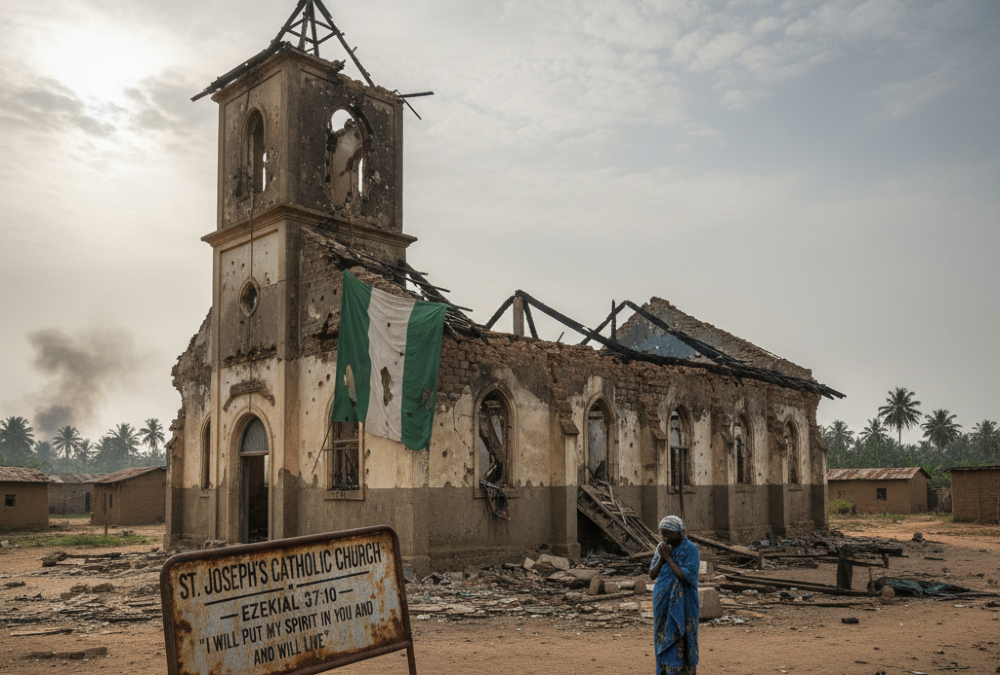

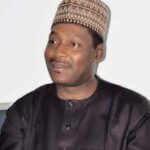


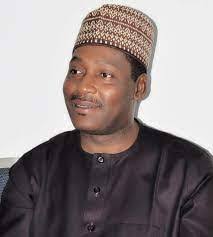





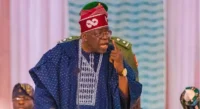
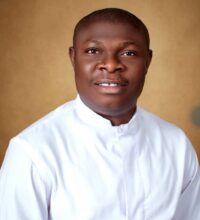
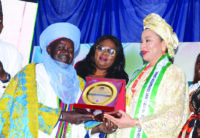
Leave a comment